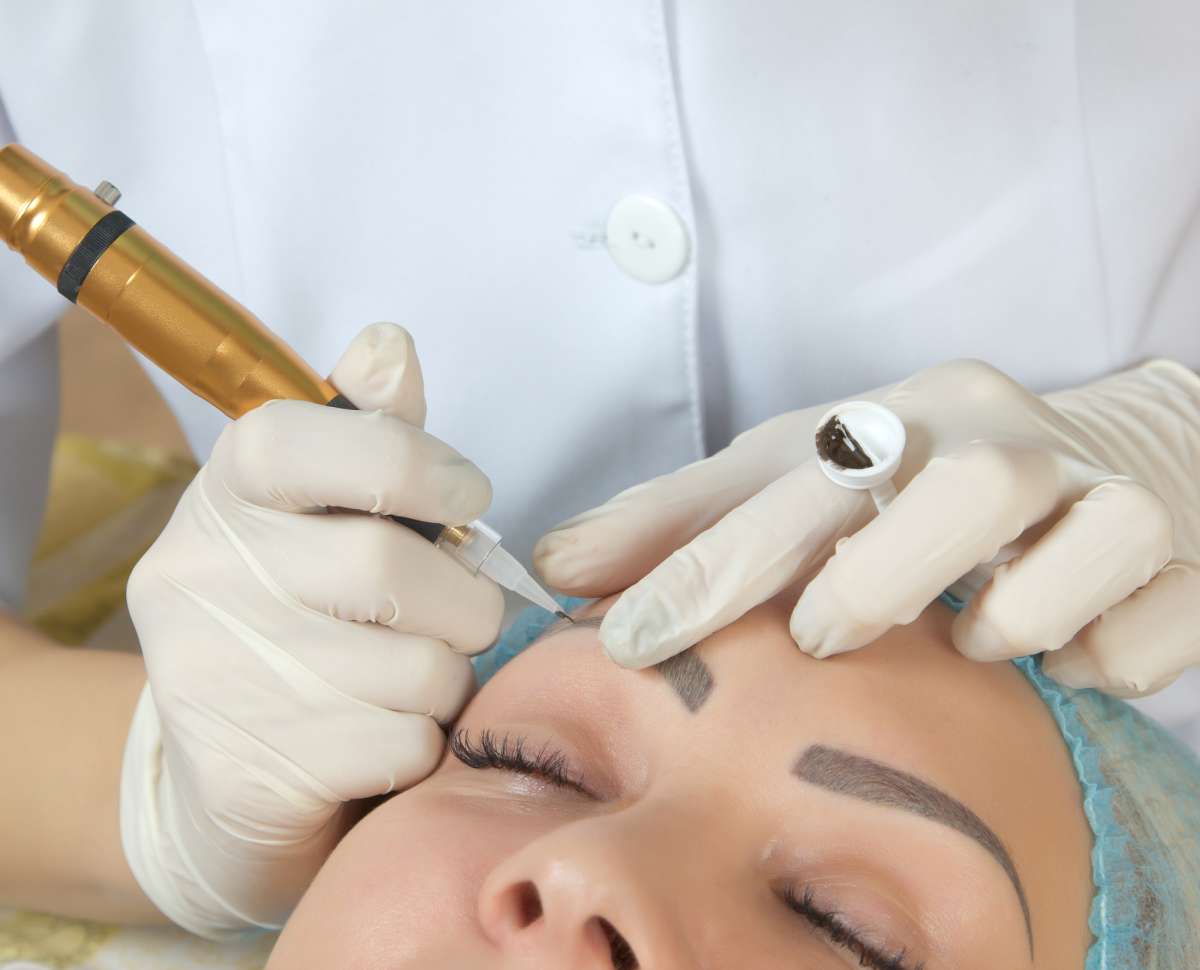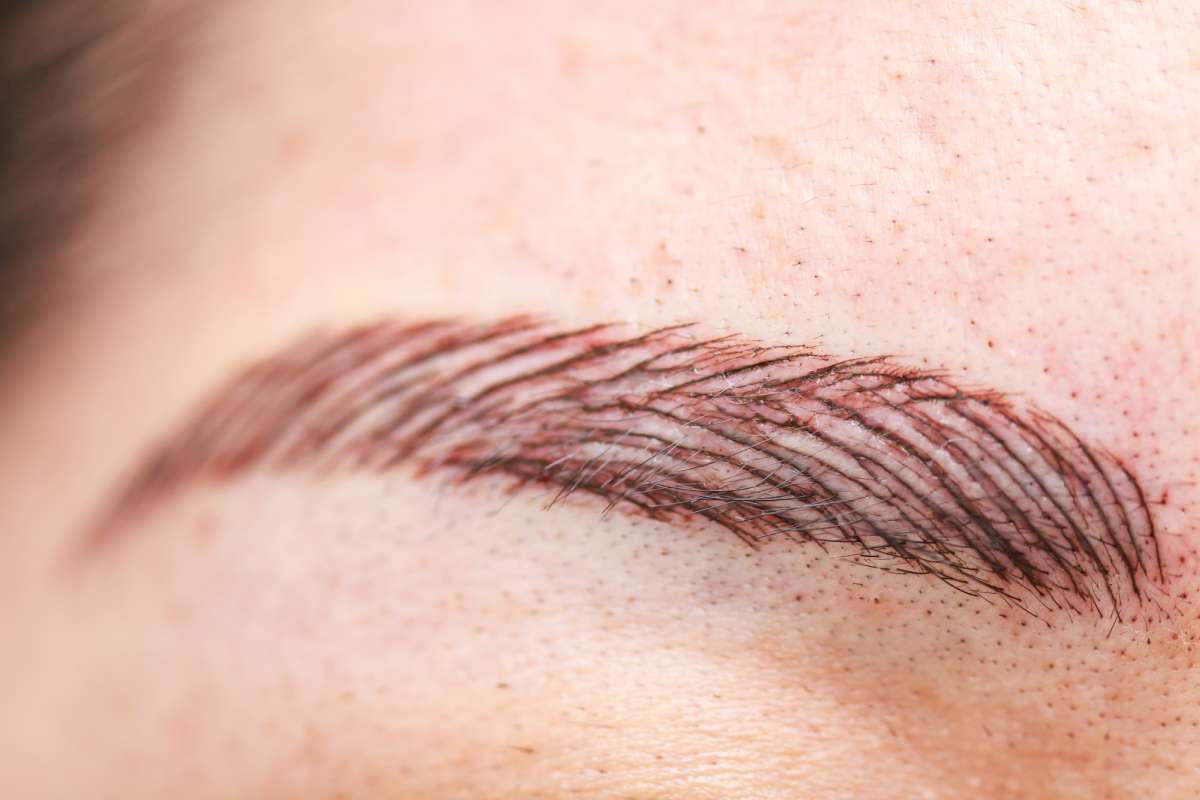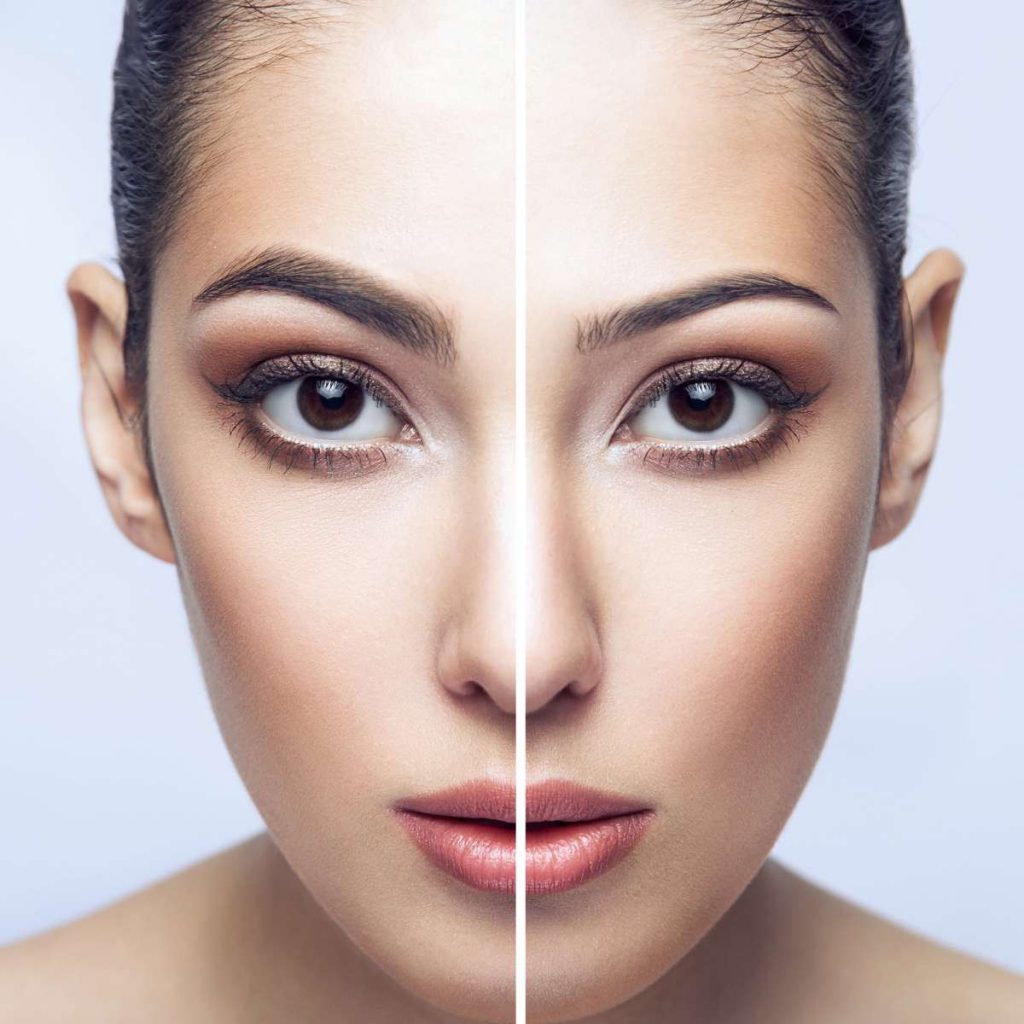Have you ever observed that some elderly women have eyebrow tattoos that have faded with time and become glaringly evident and unnatural? Microblading is a relatively new method that was developed in recent years. It promises to make stiff and artificial looking brows a thing of the past! At Fine Strokes Microblading, we occasionally hear individuals refer to microblading as eyebrow tattooing. Although this description is technically accurate, it is not entirely accurate.
Microblading is essentially the same thing as getting a tattoo on your eyebrows, except it is performed differently. A "cosmetic tattoo" is what is known as microblading. People frequently have the misconception that microblading is a form of tattooing. Microblading and tattooing the eyebrows are two very different processes, despite the fact that their names may sound alike.
Microblading Vs. Eyebrow Tattoos:
Artists that perform microblading do each line by hand. When tattooing brows, a machine is typically used. This has a significant bearing on the discussion. When performed by a trained artist, microblading creates fine lines that do not "bleed out" over time. This gives the appearance that the lines were always there. This is not the case with the classic eyebrow tattoo. In most cases, a machine is used to tattoo the eyebrows, which results in a significantly more severe harm to the skin. The lines that are produced are not as lovely, and they start to bleed together after some time has passed. You are familiar with the effect if you have ever witnessed someone getting a calligraphy tattoo on their skin and then saw the lettering develop stronger as the years went by.
In comparison to eyebrow tattooing, which leaves the brows seeming "drawn on" and unnaturally flat, the microblading technique yields a result that is more natural looking. This is because the microblading procedure makes individual strokes that look like hair and follow the same pattern of hair growth as the surrounding eyebrow hair. If you have a skilled professional perform your microblading procedure, the treated areas can be made to look like a denser version of the natural brow hair.

Microblading Retention Differs.
The fine lines that are created by microblading frequently disappear with time. For many, this process can take anywhere from one to three years. Microblading results in a significantly less amount of ink being placed beneath the skin. This ink can shift about in the dermis, which is where it is implanted, over the course of time, giving the appearance of becoming lighter. When there is a lot of ink, like in traditional tattooing, the design of the tattoo is quite consistent and frequently grows larger. When using the microblading technique, the ink will eventually fade or remove depending on the kind of skin and the amount of ink that was placed.
When getting eyebrows tattooed, traditional tattoo ink is used, but microblading calls for a specialist pigment. The rate at which ink and dye lose their colour over time is a crucial point of differentiation between the two. When tattoo ink begins to fade, it will frequently take on a bluish-green hue, particularly in the areas closest to the edges of the tattoo. Because of this, some people end up with eyebrows of strange colours, which frequently have the appearance of having been drawn on with a marker.
Microblading pigment, on the other hand, is made to gradually lighten into a shade that is closer to the original colour. This allows the patient to keep their natural appearance after treatment.
The colour of microblading inks is more resilient over time. The microblading process does not include the use of conventional tattoo ink. We utilise a particular sort of ink that is able to preserve its colour over extended periods of time. Numerous tattoo recipients have reported that their ink has darkened to a blue or brown hue over time. Microblading, on the other hand, results in colours that tend to become lighter rather than changing hue.
Permanent makeup is required for eyebrow tattoos. Once the ink has been tattooed onto the skin, it will remain there for the rest of the person's life (although undesirable fading of the ink, as mentioned above, is possible). Microblading is not at all like this at all because the results of microblading often last anywhere from six months to a year. If the patient of microblading chooses to keep their enhanced brows, they can do so by undergoing simple "touch up" treatments once per year. Microblading is a form of semi-permanent makeup that gives patients the ability to alter the appearance of their forehead in response to shifting fashions.
Eyebrows that have been microbladed may fade more quickly, but the final result won't be as obvious or as unsightly. This is due to the fact that the process of creation does not involve a significant amount of ink or angular lines. The ink from microblading may fade over time, but because it is implanted beneath the dermis, the result will not be unsightly.
During the first 7–10 days of the recuperation process, you may find that your microblading looks significantly darker. After that period of time, they will begin to fade and eventually return to their original colour. On the other hand, tattoos start out as drawings that are then filled in with coloured ink. This ink is significantly more potent, and after some time it may wind up looking pretty harsh.
Tattoos have the potential to become much lighter, much darker, or even occasionally take on a tone that is bluish or greenish in appearance. In the same way that it is possible for symbols to spread, this ink can wind up appearing to be thicker. Because of this, your eyebrow artist needs to make them as thin as possible from the beginning. After all, you don't want your eyebrows to look like a block in a year, do you?
Microblading Hurts Less.
The majority of the discomfort felt by our customers is alleviated by our artists' application of a topical anaesthetic. The majority of people who get microblading experience very little or no discomfort. Although some individuals avoid getting traditional tattoos on particular places of their body due to the associated pain, this is not often a consideration that prevents clients from getting microblading done.
The process of getting a tattoo may be somewhat uncomfortable, particularly when the ink is applied to a sensitive area such as the face. The microblading procedure causes significantly less discomfort than other methods, particularly if lidocaine is applied to the brow region before to the treatment. The majority of patients report that the sensation of microblading is comparable to that of tweezing. During the procedure of microblading, the esthetician will apply a topical anaesthetic to your brow, which will numb it and prevent you from feeling any pain. A tattoo artist is also responsible for doing the same thing.
Microblading Results Are More Natural Than Tattoos.
In microblading, each individual hair stroke is drawn by hand. It is impossible to tell the difference between a client's natural hair and these individual hair strokes when viewed with the naked eye. Microblading creates the appearance of natural eyebrow hair, in contrast to eyebrow tattoos, which can look more like a filled-in brow or a solid line (also known as the "sharpie look"). Microblading is such a great alternative for individuals who do not have eyebrow hair because of this reason. You can go through this gallery of people who have chosen to receive microblading despite having conditions such as alopecia or cancer.

The Difference Between The Methods
The procedure itself is very similar to that of tattooing; however, the primary distinction lies in the fact that microblading involves sketching by hand, whereas tattooing is performed using a machine. When you have microblading, you'll end up with small lines that won't bleed, but getting tattooed could lead to an injury.
Pros & Cons Of Microblading
Pros:
- The perfect answer for when you are in need of both a definition and a new form
- Will still be stunning even after they have lost their colour.
- They can have a natural appearance.
- Less painful than getting a tattoo Done by hand
- Semi-permanent
Cons:
- Will last you for a total of one year and six months
- More expensive than getting a tattoo.
- You will need to start over with them.
Pros & Cons Of Tattoo Brows
Pros:
- A long-lasting solution
- An excellent alternative if you are someone who does not wish to alter the manner in which you draw or the way in which you fill in your brows.
- Ideal if you need to fill in the middle area of your brow, but you already have the form that you want your brow to have.
- A cheaper alternative to getting a tattoo.
Cons:
- It's possible that over time it will get thicker.
- The ink has the potential to take on a bluish undertone.
- Won't look defined, simply filled
- Painful procedure
Frequently Asked Questions About Microblading And Brow Tattoo
Tattooing simply doesn't lend itself to the same precise technique. Tattooed brows tend to have more of a solid look, and appear as brow filler more so than your natural brow. Microblading creates a more natural end result compared to eyebrow tattooing, which results in brows that appear “drawn on” and flat.
Microblading pain vs. Tattoo
The pigment is inserted into the upper layers of the skin. Microblading will most likely feel different and hurt less than a traditional tattoo because of the numbing cream (anesthetic) applied prior to the procedure, and because there are fewer needles involved.
Do I have to shave my eyebrows off? Not at all. We map out the shape based on facial structure, current brows, and symmetry of the client's face. Any unwanted hairs that are not desired in the new brow look will be removed.
As mentioned above, microblading can last anywhere from 18 to 30 months. In general, it requires touch-ups once or twice a year. Once pigment from the procedure begins to noticeably fade, you'll need to go back to your practitioner for a touch-up application.
It sounds scarier than it actually is, and if done correctly, it will look completely natural. Aava says people are always amazed at just how natural it looks. "You can barely tell, even up close, what is a natural hair and what is one of the strokes."

